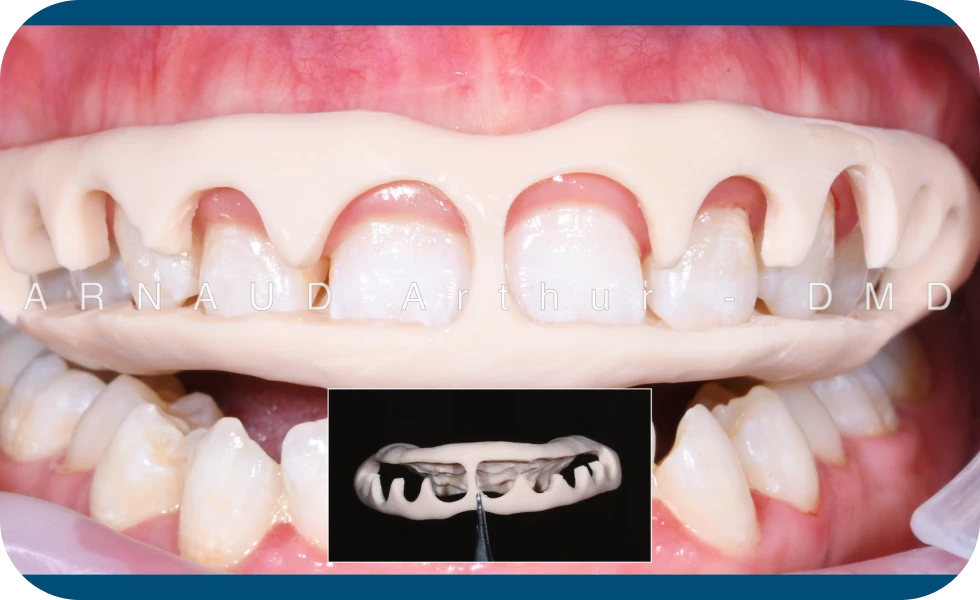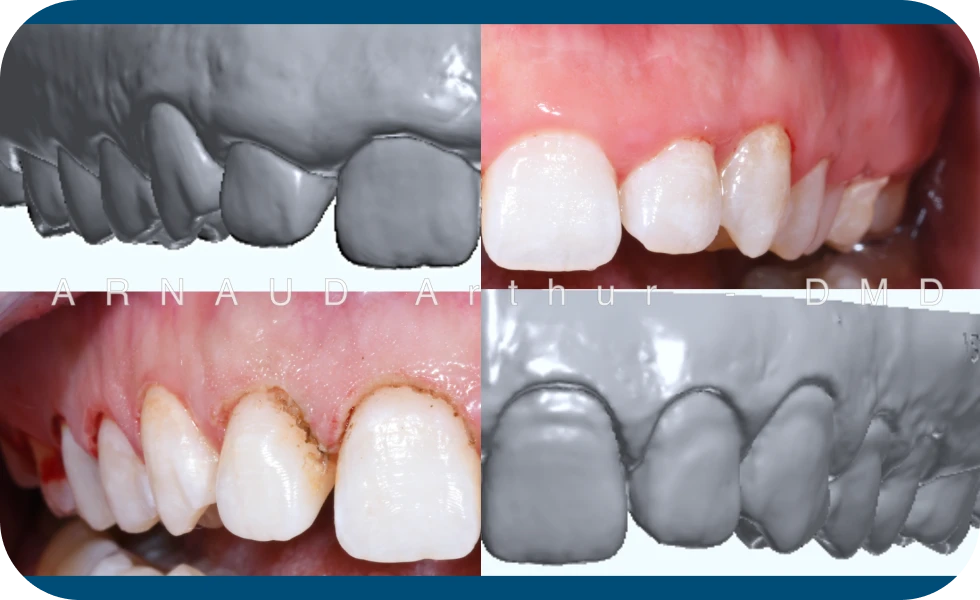Aesthetic gingivectomy
What is a gummy smile?
A gummy smile is characterized by gum exposure of between 2 and 4 mm when smiling. This condition affects women more than men, with a prevalence of 10%. The incidence of this condition decreases progressively with age due to the collapse of the upper and lower lips, which reduces the exposure of the maxillary incisors and increases that of the mandibular incisors. The gummy smile can have a negative influence on quality of life, not only because of its aesthetic impact, but also because of the patient’s oral health.
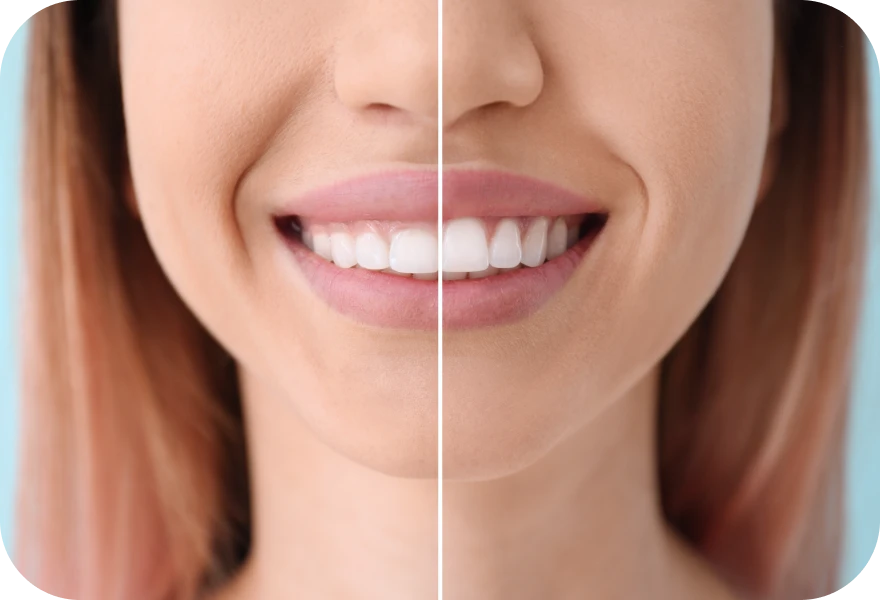
What are the reasons for the gummy smile?
Three main reasons are reported:
- Excessive vertical bone development in the upper jaw,
- Incomplete pushing of the upper teeth through the gum,
- Hyperactivity of the upper lip elevator muscles.
A combination of these factors is usually found and may require a combination of possible treatments.
What treatments are available for gummy smile?
Depending on the origin of the problem, its degree of importance and possible treatments, several medical specialties may be involved in a common treatment plan for the same patient: maxillo-facial surgeon, oral surgeon, aesthetic doctor, orthodontist or even aesthetic dentist.
In cases of significant bone excess, orthodontic treatment, possibly combined with orthognathic surgery, remains the best solution.
In the case of impaired passive eruption, gingivectomy, sometimes combined with bone resection and aesthetic dental treatment, will be proposed.
Muscular hyperactivity can be treated with botulinum toxin injections. It can also be treated by surgical repositioning of the upper lip, but this latter technique has the significant disadvantage of recurrence in many cases, and is therefore offered less and less to patients.
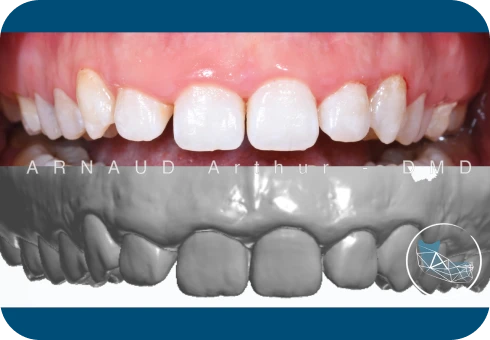
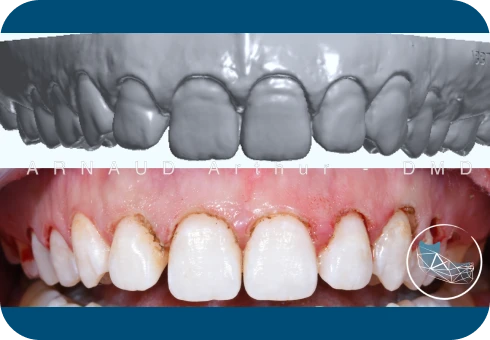
How is an aesthetic gingivectomy performed?
During the initial consultation with Dr. Arnaud, a clinical examination, digital optical impression, photographs and bone scan will be taken to quantify the height of gingiva to be removed.
In some cases, bone resection around the teeth is necessary, depending on the degree of correction required. The analysis is performed digitally on a computer.
A second visit is necessary to validate the planning with the patient. Next, a surgical guide is created digitally, adapted to the patient, for the day of the operation, which is usually performed under local anaesthetic. This guide is accurate to the millimetre, for the most predictable results.
After the procedure, several follow-up appointments will be scheduled to monitor healing, check the result and prevent recurrence.
Can I have veneers/crowns after an aesthetic gingivectomy?
As part of a comprehensive rehabilitation treatment, Dr. Arnaud will perform only the esthetic gingivectomy in collaboration with your attending dentist, who will refer you to Dr. Arnaud. It will then be possible to begin veneers, crowns and restorations at least eight weeks after the procedure with your dentist.
